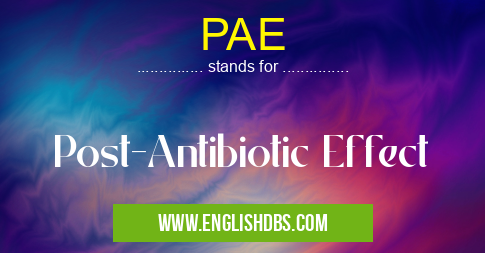What does PAE mean in PHYSIOLOGY
Post-antibiotic effect (PAE) is a term used to describe the duration of time after treatment with antibiotics in which bacteria remain suppressed. It is important to understand how PAE works in order to maximize the effectiveness of antibiotic therapy and reduce bacterial resistance.

PAE meaning in Physiology in Medical
PAE mostly used in an acronym Physiology in Category Medical that means Post-Antibiotic Effect
Shorthand: PAE,
Full Form: Post-Antibiotic Effect
For more information of "Post-Antibiotic Effect", see the section below.
» Medical » Physiology
Essential Questions and Answers on Post-Antibiotic Effect in "MEDICAL»PHYSIOLOGY"
What is PAE?
Post-antibiotic effect (PAE) is a term used to describe the duration of time after treatment with antibiotics in which bacteria remain suppressed.
How does PAE work?
When an antibiotic is administered, it enters into cells and affects replicating DNA or proteins in order to stop bacterial growth. The duration of this effect is known as the post-antibiotic effect.
Why is understanding PAE important?
Understanding how post-antibiotic effects work can help healthcare professionals make more educated decisions when it comes to prescribing antibiotics, potentially reducing the occurrence of antimicrobial resistance.
Can PAE be measured?
Yes, there are several methods available for measuring post-antibiotic effects such as minimum inhibitory concentration (MIC), minimal bactericidal concentration (MBC), and time kill curves.
Final Words:
:Understanding what causes post-antibiotic effects, as well being able to quantify them, can give healthcare providers more information when it comes to treating bacterial infections and preventing resistance from developing.
PAE also stands for: |
|
| All stands for PAE |
